Growing cannabis requires careful attention to various environmental factors, including pH, TDS, and EC. These parameters can significantly impact the plant’s growth, yield, and potency. Therefore, it’s essential to understand what pH, TDS, and EC are and how to measure and adjust them to ensure optimal growth conditions for cannabis.
Table of Contents:
I. What is pH?
A. Definition and Importance
B. pH Scale
C. pH and Cannabis Growth
II. What is TDS?
A. Definition and Importance
B. TDS Meters and Units of Measurement
C. TDS and Cannabis Growth
III. What is EC?
A. Definition and Importance
B. EC Meters and Units of Measurement
C. EC and Cannabis Growth
IV. The Best Values of pH, TDS, and EC for Cannabis Plants
A. Optimal pH Range
B. Optimal TDS Range
C. Optimal EC Range
D. TDS and EC levels for cannabis plants at each week of growth, and flowering:
V. How to Measure pH, TDS, and EC in Cannabis
A. Tools Needed
B. Step-by-Step Guide
VI. How to Adjust pH, TDS, and EC in Cannabis
A. pH Adjustment Methods
B. TDS and EC Adjustment Methods
VII. How to Control/Adjust pH, TDS, and EC in Cannabis
A. Maintaining Proper pH Levels
B. Monitoring and Adjusting TDS and EC
Conclusion:
By understanding and maintaining the ideal pH, TDS, and EC levels, you can provide the best growing conditions for your cannabis plants, leading to healthier and more abundant yields. This article will provide you with a comprehensive guide to help you achieve optimal results when growing cannabis.
What is pH?
The pH level is a critical factor in growing cannabis successfully. It refers to the acidity or alkalinity of the soil, water, or nutrient solution in which cannabis plants grow. pH plays a vital role in nutrient availability and uptake, affecting the plant’s growth and overall health.
In simple terms, pH measures the concentration of hydrogen ions in a solution on a scale from 0 to 14. A pH of 7 is considered neutral, while values below 7 are acidic and above 7 are alkaline. Cannabis plants thrive in a slightly acidic to neutral range of 5.5 to 6.5 pH. Maintaining the appropriate pH range is crucial for healthy cannabis growth and yield.
In this section, we will delve deeper into the importance of pH for cannabis growth, its scale, and how to measure and adjust it to achieve optimal results.
A. Definition and Importance
pH refers to the measurement of the acidity or alkalinity of a substance or solution. In the case of cannabis plants, pH is critical because it affects the plant’s ability to absorb essential nutrients from the soil. The nutrients cannabis plants need to grow and produce flowers are only available within a specific pH range.
If the pH level of the soil or nutrient solution is too high or too low, the plant’s roots may not be able to take up certain nutrients effectively. This can lead to nutrient deficiencies, stunted growth, or even death of the plant. Additionally, imbalanced pH levels can cause pH-dependent nutrient lockout, where nutrients become bound to the soil and are no longer available to the plant.
Maintaining the appropriate pH level is vital for cannabis growth and overall health. By monitoring and adjusting the pH levels, you can ensure that your cannabis plants are receiving the necessary nutrients for optimal growth, leading to healthier and more abundant yields.
B. pH Scale
The pH scale is a measurement of the acidity or alkalinity of a substance, with values ranging from 0 to 14. A pH of 7 is neutral, indicating that the substance is neither acidic nor alkaline. Values below 7 are acidic, while values above 7 are alkaline.
For cannabis cultivation, the optimal pH range is slightly acidic to neutral, ranging from 5.5 to 6.5. This range is essential for the plant’s nutrient uptake and overall health. Outside this range, cannabis plants may experience nutrient deficiencies or toxicities, leading to stunted growth or even death.
Here is a pH chart that displays the different pH levels and their corresponding acidity or alkalinity:
| pH Level | Description |
|---|---|
| 0 | Strongly acidic |
| 1-2 | Very acidic |
| 3-4 | Acidic |
| 5 | Slightly acidic |
| 6 | Slightly acidic to neutral |
| 7 | Neutral |
| 8 | Slightly alkaline |
| 9 | Alkaline |
| 10-11 | Very alkaline |
| 12-14 | Strongly alkaline |
It’s essential to regularly test the pH levels of your soil or nutrient solution using a pH meter or test strips. This will enable you to maintain the optimal pH range for your cannabis plants and prevent nutrient deficiencies or toxicities.
C. pH and Cannabis Growth
pH is crucial for cannabis growth, as it affects the plant’s ability to absorb essential nutrients. Cannabis plants require specific nutrients for healthy growth and flowering, such as nitrogen, phosphorus, and potassium. However, these nutrients are only available to the plant within a specific pH range.
If the pH level of the soil or nutrient solution is too high or too low, the plant’s roots may not be able to take up certain nutrients effectively, leading to nutrient deficiencies or toxicities. For example, if the pH level is too high, iron, magnesium, and manganese become less available to the plant, leading to yellowing of leaves and stunted growth. Conversely, if the pH level is too low, phosphorus and calcium become less available, leading to purple stems and slow growth.
By maintaining the appropriate pH range, cannabis growers can ensure that their plants are receiving the necessary nutrients for optimal growth and flowering. Regularly testing the pH levels of the soil or nutrient solution and adjusting them as needed is crucial for successful cannabis cultivation.
II. What is TDS?
Total Dissolved Solids (TDS) refers to the total concentration of inorganic and organic substances dissolved in water or nutrient solution. In the context of cannabis cultivation, TDS is an important factor to consider because it indicates the overall nutrient concentration available to the plant.
TDS is typically measured in parts per million (ppm), which refers to the number of particles of a substance in a million parts of water. For example, if the TDS meter reading is 500 ppm, it means that there are 500 parts of dissolved substances per million parts of water.
TDS is an essential factor to monitor because it can affect the plant’s growth and yield. When the TDS is too high, the plant may experience nutrient burn, where the roots are unable to absorb all the available nutrients, leading to toxic buildup. On the other hand, if the TDS is too low, the plant may not receive enough nutrients, leading to stunted growth and low yields.
In the following sections, we will discuss the optimal TDS range for cannabis cultivation, how to measure TDS, and how to adjust it to ensure optimal plant growth and yield.
A. Definition and Importance
Total Dissolved Solids (TDS) is a measurement of the concentration of dissolved substances in water or nutrient solution. TDS is an important factor to consider in cannabis cultivation because it indicates the overall nutrient concentration available to the plant.
In cannabis cultivation, the optimal TDS range is dependent on the plant’s stage of growth. Seedlings and clones require lower TDS levels, while mature plants require higher TDS levels. By monitoring the TDS levels and adjusting them as needed, growers can ensure that their plants are receiving the appropriate amount of nutrients for optimal growth and yield.
Additionally, TDS levels can be affected by environmental factors such as temperature, humidity, and water quality. Therefore, monitoring TDS levels can also help growers identify potential issues with their growing conditions and make necessary adjustments.
Measuring and adjusting TDS is an essential part of cannabis cultivation, and in the following sections, we will discuss how to measure TDS, the optimal TDS range for cannabis growth, and how to adjust TDS levels to ensure optimal plant health and yield.
B. TDS Meters and Units of Measurement
TDS meters are essential tools for monitoring the nutrient concentration in water or nutrient solution. They measure the electrical conductivity of the solution, which correlates with the concentration of dissolved solids.
There are different types of TDS meters available, including handheld meters and inline meters. Handheld meters are portable and convenient for small-scale operations, while inline meters are ideal for larger-scale operations where continuous monitoring is necessary.
TDS meters measure the concentration of dissolved substances in parts per million (ppm) or milligrams per liter (mg/L). The units of measurement may vary depending on the TDS meter, so it is important to refer to the manufacturer’s instructions for accurate readings.
Here is a chart showing the different units of measurement and their conversion factors:
| Unit of Measurement | Conversion Factor |
|---|---|
| ppm | 1 |
| mg/L | 1 |
| µS/cm | 0.5 |
| mS/cm | 500 |
When using a TDS meter, it is essential to calibrate it regularly to ensure accurate readings. Calibration solutions are available and should be used according to the manufacturer’s instructions.
C. TDS and Cannabis Growth
TDS is a critical factor for optimal cannabis growth and yield. The appropriate TDS range for cannabis cultivation depends on the plant’s stage of growth, as different stages require different nutrient concentrations.
During the vegetative stage, cannabis plants require a lower TDS range, typically between 500-800 ppm, to encourage strong vegetative growth. As the plant enters the flowering stage, it requires a higher TDS range, typically between 800-1000 ppm, to support flower development and nutrient uptake.
It is important to note that TDS levels that are too high or too low can negatively affect plant health and yield. High TDS levels can cause nutrient burn, where the roots are unable to absorb all the nutrients, leading to toxic buildup and damage to the plant. On the other hand, low TDS levels can result in nutrient deficiencies and stunted growth.
To maintain optimal TDS levels, growers should regularly monitor the TDS of their nutrient solution and adjust it as necessary. When adjusting TDS levels, it is essential to make gradual changes and avoid sudden fluctuations, which can stress the plant and negatively affect growth and yield.
III. What is EC?
Electrical Conductivity (EC) is a measurement of the ability of a substance to conduct electricity. In cannabis cultivation, EC is used as a measure of the concentration of dissolved minerals and nutrients in the water or nutrient solution.
EC is measured in Siemens per meter (S/m) or millisiemens per centimeter (mS/cm). One mS/cm is equivalent to 1000 micro siemens per centimeter (µS/cm).
Like TDS, EC levels are crucial for optimal cannabis growth and yield, as they indicate the nutrient concentration available to the plant. However, unlike TDS, EC measurements do not take into account non-ionic compounds that may affect nutrient availability. Therefore, TDS measurements are often preferred for their more comprehensive picture of nutrient availability.
EC is affected by various factors, including water quality, pH levels, and nutrient solution composition. Growers can use EC meters to measure the EC of their water or nutrient solution and adjust it as necessary to ensure optimal plant growth.
In the following sections, we will discuss how to measure EC using an EC meter, the optimal EC range for cannabis growth, and how to adjust EC levels to ensure optimal plant health and yield. We will also provide tips on maintaining and calibrating EC meters for accurate readings.
A. Definition and Importance
EC measurement is a crucial tool for cannabis growers to monitor the nutrient concentration of their water or nutrient solution. The EC reading indicates the level of dissolved minerals and nutrients in the solution, allowing growers to adjust nutrient levels to achieve optimal plant growth and yield.
EC measurement is important because it helps growers avoid over or under-fertilization, which can negatively affect plant health and yield. If the EC level is too low, the plant may experience nutrient deficiencies, resulting in stunted growth and poor yield. On the other hand, if the EC level is too high, the plant may experience nutrient burn, where the roots are unable to absorb all the nutrients, leading to toxic buildup and damage to the plant.
EC measurement is also crucial for hydroponic systems, where the plant relies entirely on the nutrient solution for its nutrition. In hydroponic systems, the nutrient solution must be precisely balanced to provide the necessary nutrients for optimal plant growth.
In summary, EC measurement is an essential tool for cannabis growers to monitor and adjust nutrient levels to ensure optimal plant health and yield. In the following sections, we will discuss the importance of maintaining the correct EC level for different stages of cannabis growth and provide tips on how to achieve and maintain the optimal EC range.
B. EC Meters and Units of Measurement
EC meters are used to measure the electrical conductivity of water or nutrient solutions, providing a numerical value that indicates the concentration of dissolved minerals and nutrients.
EC meters work by applying an electric current to the solution and measuring the conductivity of the solution. The meter then converts the conductivity measurement into an EC reading, usually displayed in millisiemens per centimeter (mS/cm).
There are two main types of EC meters: handheld and continuous. Handheld meters are portable and easy to use, making them a popular choice for small-scale cannabis growers. Continuous meters, on the other hand, are designed to be left in the nutrient solution, providing constant monitoring of EC levels.
When choosing an EC meter, it is essential to consider factors such as accuracy, reliability, and ease of use. It is also important to calibrate the meter regularly to ensure accurate readings.
EC meters can provide valuable information about the nutrient status of the plant, allowing growers to adjust nutrient levels as necessary to achieve optimal growth and yield. However, it is important to note that EC measurements do not account for non-ionic compounds that may affect nutrient availability. Therefore, it is often recommended to use TDS measurements in conjunction with EC measurements for a more comprehensive picture of nutrient availability.
C. EC and Cannabis Growth
EC measurement is an essential tool for cannabis growers to monitor and adjust nutrient levels to ensure optimal plant growth and yield. The optimal EC range for cannabis growth varies depending on the stage of growth, with different levels required during vegetative growth and flowering.
During vegetative growth, cannabis plants require a lower EC range of around 0.8-1.2 mS/cm. This range provides sufficient nutrients for healthy growth without causing nutrient burn. During the flowering stage, the EC range should be increased to around 1.5-2.0 mS/cm to support bud development and maximize yield.
Maintaining the correct EC level is critical to avoid over or under-fertilization, which can negatively impact plant health and yield. It is also essential to ensure that the nutrient solution is well-balanced and provides all the necessary nutrients for optimal plant growth.
Adjusting EC levels can be done by adding or reducing nutrient solutions to the water, adjusting the pH level of the nutrient solution, or using reverse osmosis (RO) water to dilute the solution. It is important to monitor the plant’s response to changes in EC levels and adjust as necessary.
EC levels can also be affected by factors such as water quality, temperature, and humidity. For example, high humidity levels can lead to an increase in EC levels due to water uptake through the leaves. It is important to account for these factors when monitoring and adjusting EC levels.
In summary, maintaining the correct EC level is crucial for cannabis growers to ensure optimal plant health and yield. The optimal EC range varies depending on the stage of growth, and it is important to monitor and adjust levels as necessary.
IV. The Best Values of pH, TDS, and EC for Cannabis Plants
a. Optimal pH
| Nutrient | Description | pH Range for Optimal Absorption |
|---|---|---|
| Nitrogen | An essential macronutrient that is important for vegetative growth and overall plant health. | 6.0-7.0 |
| Phosphorus | Another essential macronutrient that is important for flower development and root growth. | 6.0-7.0 |
| Potassium | A macronutrient that helps regulate water balance in plants and is important for flower development. | 6.0-7.0 |
| Calcium | A macronutrient that is important for cell wall development and overall plant structure. | 6.0-7.0 |
| Magnesium | A macronutrient that is important for chlorophyll production and overall plant growth. | 6.0-7.0 |
| Sulfur | A macronutrient that is important for protein synthesis and overall plant health. | 6.0-7.0 |
| Iron | A micronutrient that is important for chlorophyll production and overall plant growth. | 6.0-6.5 |
| Manganese | A micronutrient that is important for photosynthesis and enzyme activation. | 5.5-6.5 |
| Zinc | A micronutrient that is important for enzyme activation and overall plant growth. | 5.5-7.0 |
| Copper | A micronutrient that is important for chlorophyll production and overall plant growth. | 5.5-6.5 |
| Boron | A micronutrient that is important for cell wall development and overall plant health. | 5.0-6.0 |
| Molybdenum | A micronutrient that is important for nitrogen fixation and overall plant growth. | 6.0-7.0 |
This chart shows the pH range at which each nutrient is best absorbed by cannabis plants. Maintaining the proper pH level in the nutrient solution is crucial to ensuring that plants have access to these essential nutrients, which in turn promotes healthy growth and development.
b. Optimal TDS
The optimal TDS range for cannabis growth varies depending on the stage of growth. During the vegetative stage, the optimal TDS range is between 600-800 ppm (parts per million). During the flowering stage, the optimal range is between 800-1000 ppm. It is important to note that TDS readings may vary depending on the nutrient solution used and water quality.
c. Optimal EC
The optimal EC range for cannabis growth also varies depending on the stage of growth. During the vegetative stage, the optimal EC range is between 0.8-1.2 mS/cm. During the flowering stage, the optimal range is between 1.5-2.0 mS/cm. It is important to note that EC readings may vary depending on the nutrient solution used and water quality.
Maintaining the optimal pH, TDS, and EC levels is crucial to ensure healthy and productive cannabis plants. In the next section, we will discuss how to measure pH, TDS, and EC in cannabis plants.
d. TDS and EC levels for cannabis plants at each week of vegetative growth, followed by the first few weeks of flowering:
| Week of Growth | TDS Levels | EC Levels |
|---|---|---|
| 1 Vegetative | 100-250 ppm | 0.2-0.5 mS/cm |
| 2 Vegetative | 250-350 ppm | 0.5-0.7 mS/cm |
| 3 Vegetative | 350-500 ppm | 0.7-1.0 mS/cm |
| 4 Vegetative | 500-700 ppm | 1.0-1.4 mS/cm |
| 5 (early flowering) | 700-900 ppm | 1.4-1.8 mS/cm |
| 6 (early flowering) | 800-1000 ppm | 1.6-2.0 mS/cm |
| 7 (mid flowering) | 900-1100 ppm | 1.8-2.2 mS/cm |
| 8 (mid flowering) | 1000-1200 ppm | 2.0-2.4 mS/cm |
| 9 (late flowering) | 1100-1300 ppm | 2.2-2.6 mS/cm |
| 10 (late flowering) | 1200-1400 ppm | 2.4-2.8 mS/cm |
| 11 (late flowering) | 1300-1500 ppm | 2.6-3.0 mS/cm |
| 12 (ripening/harvest) | <1000 ppm | <2.0 mS/cm |
Please note that these are general guidelines and the actual TDS and EC levels may vary depending on factors such as the specific strain of cannabis, the growing medium, and the environment. It’s important to monitor the plants’ response to the nutrient levels and adjust accordingly. Additionally, pH levels should be checked and adjusted to ensure optimal nutrient uptake.
V. How to measure pH, TDS and EC
A. Tools Needed
- pH meter
- TDS/EC meter
- Calibration solutions for pH meter
- Distilled water
- Nutrient solution
- Measuring cup
- Stirring spoon or stick
- Protective gloves (optional)
B. Step-by-Step Guide
- Calibration: Before measuring the pH, TDS, and EC, make sure to calibrate the pH meter using the calibration solutions according to the manufacturer’s instructions. This ensures accurate readings.
- Preparing the Nutrient Solution: Measure out the nutrient solution using a measuring cup, following the manufacturer’s recommended dosage. Dilute the nutrient solution with distilled water if necessary, and stir well.
- Measuring pH: Dip the pH meter into the nutrient solution and wait for the reading to stabilize. If the pH is outside the desired range (5.5-6.5 for hydroponics, 6.0-7.0 for soil), adjust the pH by adding pH up or pH down solutions, stirring and retesting until the desired pH is reached.
- Measuring TDS/EC: Dip the TDS/EC meter into the nutrient solution and wait for the reading to stabilize. TDS (total dissolved solids) measures the concentration of all dissolved solids in the nutrient solution, while EC (electrical conductivity) measures the concentration of ions in the solution. Record the TDS and/or EC readings for future reference.
- Monitoring: Throughout the plant’s growth cycle, continue to monitor the pH, TDS, and EC levels regularly and adjust the nutrient solution accordingly to ensure optimal nutrient uptake by the plants.
- Safety Precautions: When working with nutrient solutions, it’s important to wear protective gloves and avoid contact with the skin or eyes. Additionally, be sure to keep the meters and calibration solutions clean and stored properly to ensure accuracy and longevity.
Overall, measuring pH, TDS, and EC is a crucial part of growing healthy cannabis plants. With the right tools and techniques, you can ensure that your plants are getting the right amount of nutrients for optimal growth and yield.
VI. How to Adjust pH, TDS, and EC in Cannabis
A. pH Adjustment Methods
Adjusting pH levels in cannabis plants can be done through several methods, including:
- pH Up and pH Down solutions: These are liquid solutions that can be added to the nutrient solution to raise or lower pH levels, respectively.
- Baking Soda: Baking soda is an alkaline compound that can be used to raise pH levels in the nutrient solution.
- Citric Acid: Citric acid is an acidic compound that can be used to lower pH levels in the nutrient solution.
When adjusting pH levels, it is important to make small adjustments and retest the pH level until the optimal range is achieved.
B. TDS and EC Adjustment Methods
Adjusting TDS and EC levels in cannabis plants can be done through several methods, including:
- Adding or reducing nutrient solutions: TDS levels can be adjusted by adding or reducing nutrient solutions to the water until the optimal range is achieved.
- Dilution with water: If TDS levels are too high, the nutrient solution can be diluted with water to reduce the TDS level.
- pH adjustments: Adjusting pH levels can also affect TDS levels, as pH levels can impact nutrient availability. Therefore, adjusting pH levels can indirectly impact TDS levels.
When adjusting TDS and EC levels, it is important to make small adjustments and retest the levels until the optimal range is achieved. Overfeeding can lead to nutrient burn, while underfeeding can lead to deficiencies, so it is important to find the right balance.
In the next section, we will discuss how to control and maintain pH, TDS, and EC levels in cannabis plants.
VII. How to Control/Adjust pH, TDS, and EC in Cannabis
Maintaining the proper pH, TDS, and EC levels is critical to ensure healthy cannabis growth and yield. Here are some methods to help control and adjust pH, TDS, and EC levels in cannabis:
A. pH Control
- Regular testing: It is important to regularly test the pH level of the nutrient solution using a pH meter. Ideally, pH levels should be tested daily to ensure that the levels remain within the optimal range.
- Water source: The quality of the water used can have an impact on pH levels. Using reverse osmosis (RO) water can help maintain a neutral pH level.
- Adjusting pH levels: pH levels can be adjusted using pH up and pH down solutions. Start by adding small amounts and retest the pH level until the optimal range is achieved.
- Flushing: If pH levels are too high or too low, flushing the growing medium with pH-balanced water can help reset the pH level.
B. TDS and EC Control
- Regular testing: It is important to regularly test TDS and EC levels using a TDS meter to ensure that the levels remain within the optimal range.
- Nutrient solution strength: The strength of the nutrient solution can impact TDS and EC levels. Follow the manufacturer’s instructions to ensure the correct strength.
- Adjusting TDS and EC levels: TDS and EC levels can be adjusted by adding or reducing the nutrient solution or by diluting the solution with water. Start by making small adjustments and retest until the optimal range is achieved.
- Flushing: If TDS or EC levels are too high, flushing the growing medium with pH-balanced water can help reduce the levels.
By regularly testing and adjusting pH, TDS, and EC levels, growers can ensure healthy cannabis growth and maximize yield.

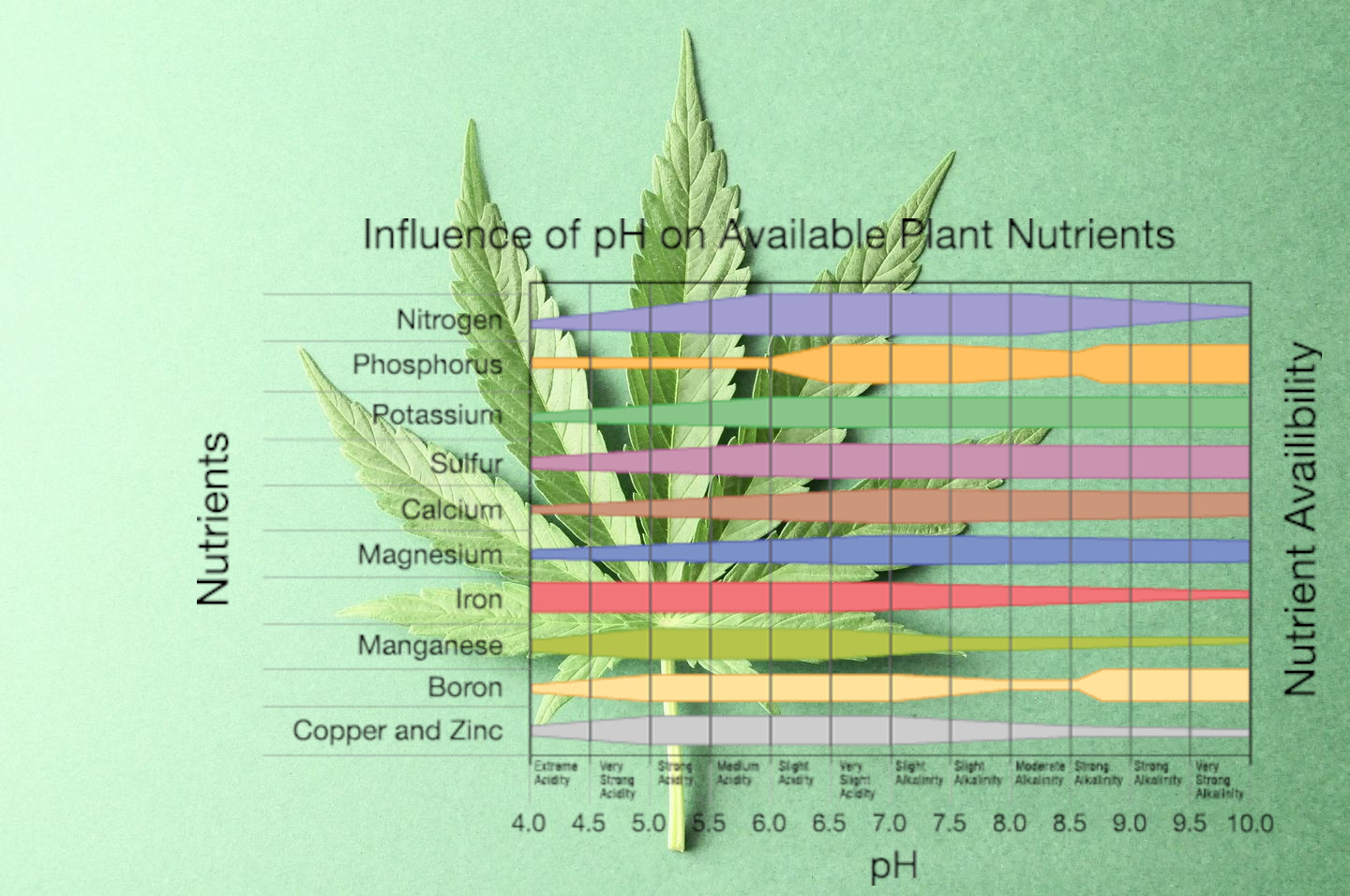
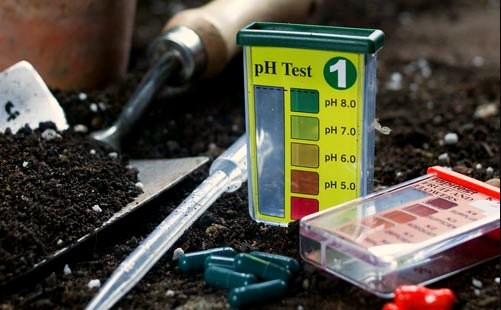

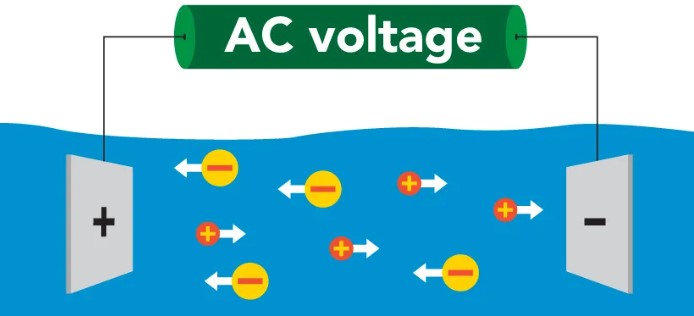
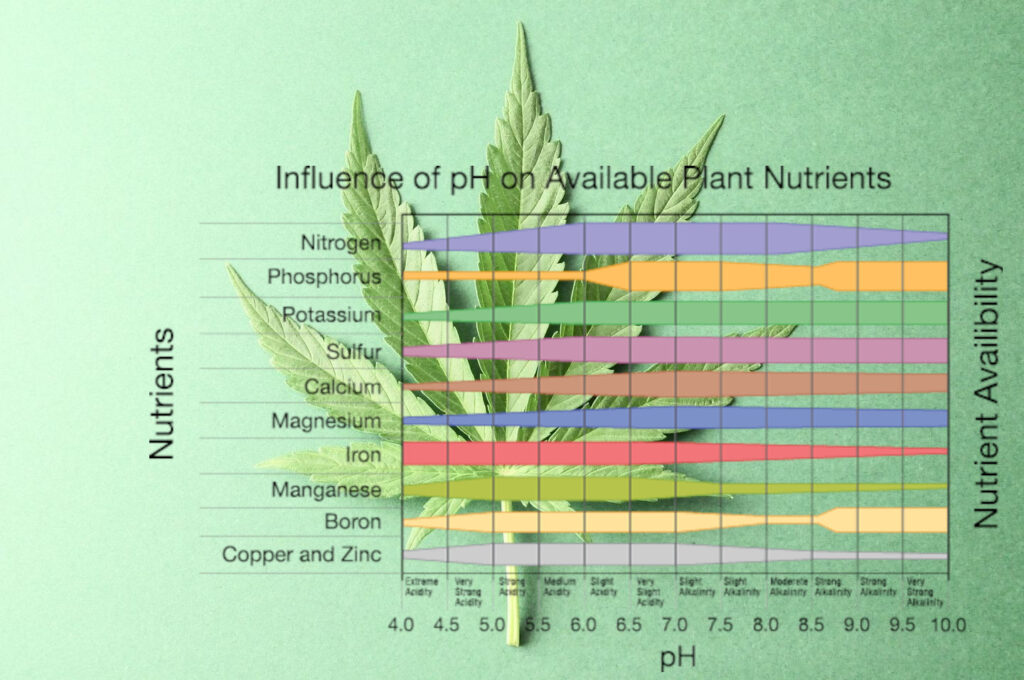
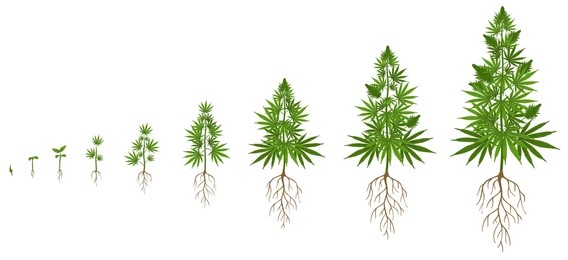
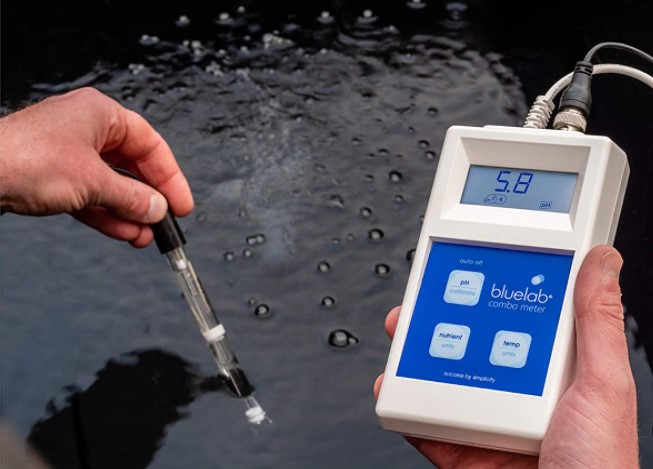
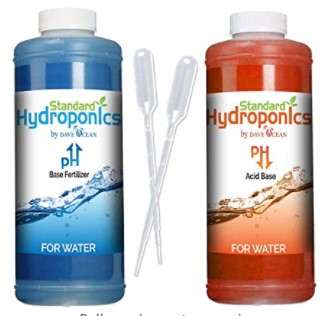

I like this post, enjoyed the charts, easy to follow